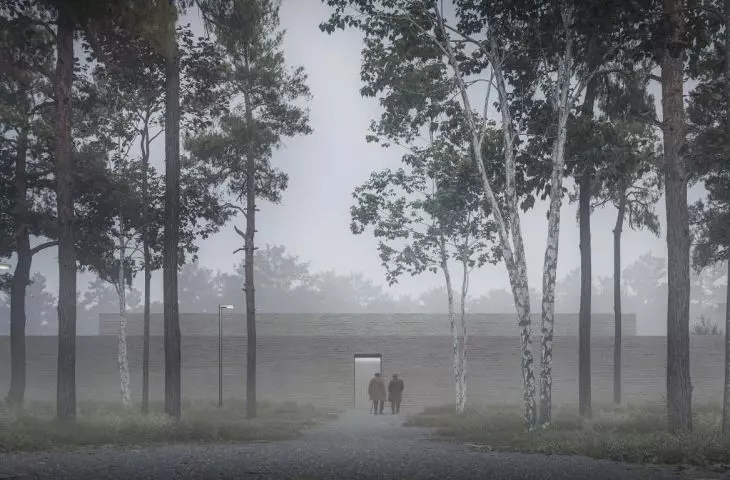Designing a museum space related to memorial sites, especially one that has been marked by the tragedies of war, requires not only understanding, but above all respect. The Bujnowski Architekci studio created concepts aimed at creating an appropriate setting for telling the story of the dramatic events of the Treblinka camp.
Treblinka Museum
© Bujnowski Architekci
competition
The project developed by the studios won first prize in the competition to develop an architectural and urban planning concept for the task "Construction of an exhibition and educational facility" on the grounds of the Treblinka Museum. German Nazi extermination and labor camp (1941-1944).
On the portal we also presented concepts for the Path of Remembrance, designed by the Lahdelma & Mahlamäki studio in cooperation with the KXM studio.
A space marked by tragedy - the idea
The architects set the goal of saving from oblivion and leaving a lasting trace in memory. An important element was the surroundings of the camp site, consisting of a forest. The designers of the premise sought to create a space that would not negate the spirit of the place - metaphysical emptiness and lack. The building complex is intended to create a setting for a space marked by tragedy, marking the division between the area of education and contemplation, which is the site of the camp with the memorial.
The entrance hall is kept in twilight - the only source of light is a small gap
© Bujnowski Architects
The design team referred to the words of Samuel Willenberg, a former camp inmate and sculptor, whose work dedicated to the tragedy of the Holocaust is housed at the Treblinka Museum.
What happened in the camp cannot be shown literally. But neither can it be an abstraction. Both would offend the people who were there and fell.... - Samuel Willenberg.
The architectural form of the building is based on a simple mass avoiding additional decoration. Its essence became matter - layered brick from various sources, often from demolitions. An important element of the design was for the bricks to form an irregular, raw and unique arrangement. The interior is irregularly whitewashed, making it less and less noticeable in the space. The concept is based on the integration of the current Museum building into the complex of the new development.
The exhibition part consists of two halls: temporary and permanent
© Bujnowski Architekci
telling the story of the tragedy - the tour path
The first stage of the path is the inner courtyard behind the wall, where there is a clearing of unnecessary external stimuli affecting the visitor limited to the sky and trees. The next point on the path is the main hall, kept in semi-darkness, where the only natural light source is a gap in the ceiling, creating the impression of a crack.
The exhibitionarea includes two exhibition halls connected by a gallery of Samuel Willenberg sculptures: a temporary one and a permanent one. The final stage of the path inside the building is the prayer room - a place of concentration and contemplation, allowing visitors to assimilate the tragic historical events. After leaving this part, visitors go to a place not directly connected with the entrance area.
The museum space created for the display of Samuel Willenberg's sculptures allows the works to be viewed from all sides
© Bujnowski Architects
the role of the environment
The architects tried to limit interference with the landscape outside the museum walls. The boundaries in the landscape remain blurred and interpenetrating - in opposition to the walls protecting the memorial space. Nature is meant to influence visitors - to create a place to contemplate and face the tragic events.
It was important for the designers that the natural landscape should not compete with the museum wall, but create blurred boundaries that intermingle with the forest flora. A brick paved path leading to the museum passes through the forest.
An important task was to fit the museum into the surroundings
© Bujnowski Architects
place of remembrance
The concept developed by the Bujnowski Architekci studio seeks to avoid architectural dominance in a space marked by tragic events. The environment remains an important element introduced into the narrative of the tragedy.
The matter is meant to correspond with the surrounding forest
© Bujnowski Architekci













































